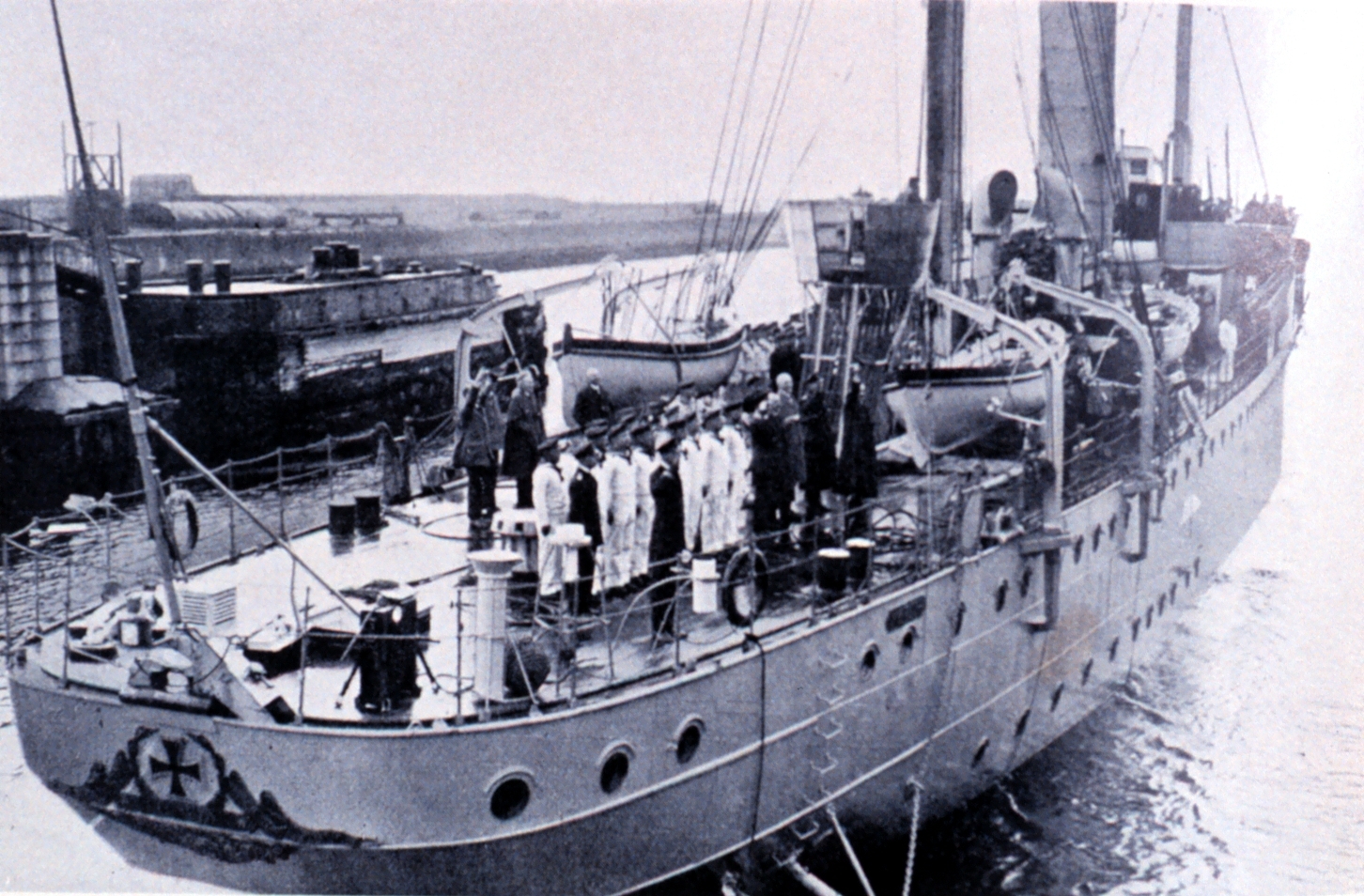German Meteor Expedition on:
[Wikipedia]
[Google]
[Amazon]
 The German Meteor expedition ( German: ''Deutsche Atlantik Expedition'') was an oceanographic expedition that explored the South Atlantic ocean from the equatorial region to Antarctica in 1925–1927. Depth soundings, water temperature studies, water samples, studies of marine life and atmospheric observations were conducted.Stein
The German Meteor expedition ( German: ''Deutsche Atlantik Expedition'') was an oceanographic expedition that explored the South Atlantic ocean from the equatorial region to Antarctica in 1925–1927. Depth soundings, water temperature studies, water samples, studies of marine life and atmospheric observations were conducted.Stein
 The ship zigzagged between Africa and South America and took echo soundings of the South Atlantic between 20° North and 60° South. In January 1926 the
The ship zigzagged between Africa and South America and took echo soundings of the South Atlantic between 20° North and 60° South. In January 1926 the
 ''Meteor'' was equipped with early sonar equipment with which it produced the first detailed survey of the south Atlantic Ocean floor. The survey established that the mid-Atlantic ridge was continuous through the South Atlantic and continued into the Indian Ocean beyond the
''Meteor'' was equipped with early sonar equipment with which it produced the first detailed survey of the south Atlantic Ocean floor. The survey established that the mid-Atlantic ridge was continuous through the South Atlantic and continued into the Indian Ocean beyond the
Images
at
 The German Meteor expedition ( German: ''Deutsche Atlantik Expedition'') was an oceanographic expedition that explored the South Atlantic ocean from the equatorial region to Antarctica in 1925–1927. Depth soundings, water temperature studies, water samples, studies of marine life and atmospheric observations were conducted.Stein
The German Meteor expedition ( German: ''Deutsche Atlantik Expedition'') was an oceanographic expedition that explored the South Atlantic ocean from the equatorial region to Antarctica in 1925–1927. Depth soundings, water temperature studies, water samples, studies of marine life and atmospheric observations were conducted.Stein
Expedition
The survey vessel left Wilhelmshaven on 16 April 1925 with the oceanographerAlfred Merz
Alfred Merz (24 January 1880 – 16 August 1925) was an Austrian geographer, oceanographer and director of the Institute of Marine Science in Berlin. He died of pneumonia in Buenos Aires while on an expedition to survey the South Atlantic an ...
in charge of the expedition.Nieder and Schroeder
 The ship zigzagged between Africa and South America and took echo soundings of the South Atlantic between 20° North and 60° South. In January 1926 the
The ship zigzagged between Africa and South America and took echo soundings of the South Atlantic between 20° North and 60° South. In January 1926 the Strait of Magellan
The Strait of Magellan (), also called the Straits of Magellan, is a navigable sea route in southern Chile separating mainland South America to the north and Tierra del Fuego to the south. The strait is considered the most important natural pass ...
was transited; in March the same year a seamount
A seamount is a large geologic landform that rises from the ocean floor that does not reach to the water's surface (sea level), and thus is not an island, islet or cliff-rock. Seamounts are typically formed from extinct volcanoes that rise abru ...
was found and named ''Meteor Bank'' ().
In June 1926 Merz, who already had health problems before the start of the expedition, was hospitalised at the German Hospital in Buenos Aires. He died of pneumonia on 25 August 1926. The overall lead of the expedition was assumed by the ship's captain
Captain is a title, an appellative for the commanding officer of a military unit; the supreme leader of a navy ship, merchant ship, aeroplane, spacecraft, or other vessel; or the commander of a port, fire or police department, election precinct, e ...
Fritz Spieß, while Georg Wüst
Georg Adolf Otto Wüst (born 15 June 1890 in Posen, Germany (now Poznan, Poland); died 8 November 1977 in Erlangen, Germany) was a German oceanographer. His pioneering work on the Atlantic Ocean provided a new view of the motions of water masses ...
became chief oceanographer.
The expedition returned to Wilhelmshaven on 2 June 1927. In the course of the venture 67,000 depth soundings were made, more than were sailed and more than 800 weather balloon
A weather balloon, also known as sounding balloon, is a balloon (specifically a type of high-altitude balloon) that carries instruments aloft to send back information on atmospheric pressure, temperature, humidity and wind speed by means of a ...
s were launched.
Results
 ''Meteor'' was equipped with early sonar equipment with which it produced the first detailed survey of the south Atlantic Ocean floor. The survey established that the mid-Atlantic ridge was continuous through the South Atlantic and continued into the Indian Ocean beyond the
''Meteor'' was equipped with early sonar equipment with which it produced the first detailed survey of the south Atlantic Ocean floor. The survey established that the mid-Atlantic ridge was continuous through the South Atlantic and continued into the Indian Ocean beyond the Cape of Good Hope
The Cape of Good Hope ( af, Kaap die Goeie Hoop ) ;''Kaap'' in isolation: pt, Cabo da Boa Esperança is a rocky headland on the Atlantic coast of the Cape Peninsula in South Africa.
A common misconception is that the Cape of Good Hope is t ...
.
References
Sources
* *External links
Images
at
NOAA
The National Oceanic and Atmospheric Administration (abbreviated as NOAA ) is an United States scientific and regulatory agency within the United States Department of Commerce that forecasts weather, monitors oceanic and atmospheric conditio ...
{{Authority control
Oceanographic expeditions
Atlantic expeditions
Expeditions from Germany
1920s in Antarctica
1920s in science